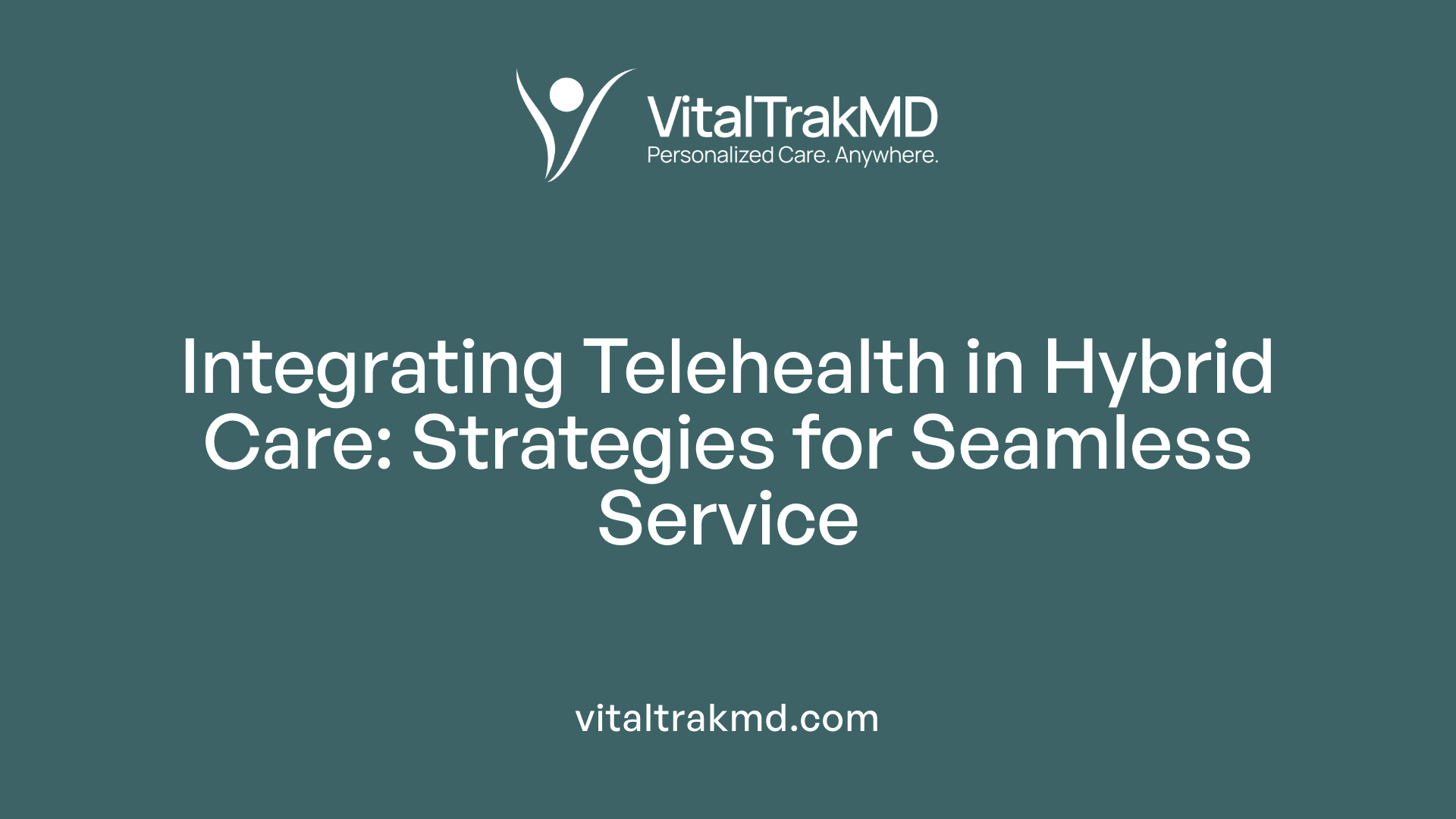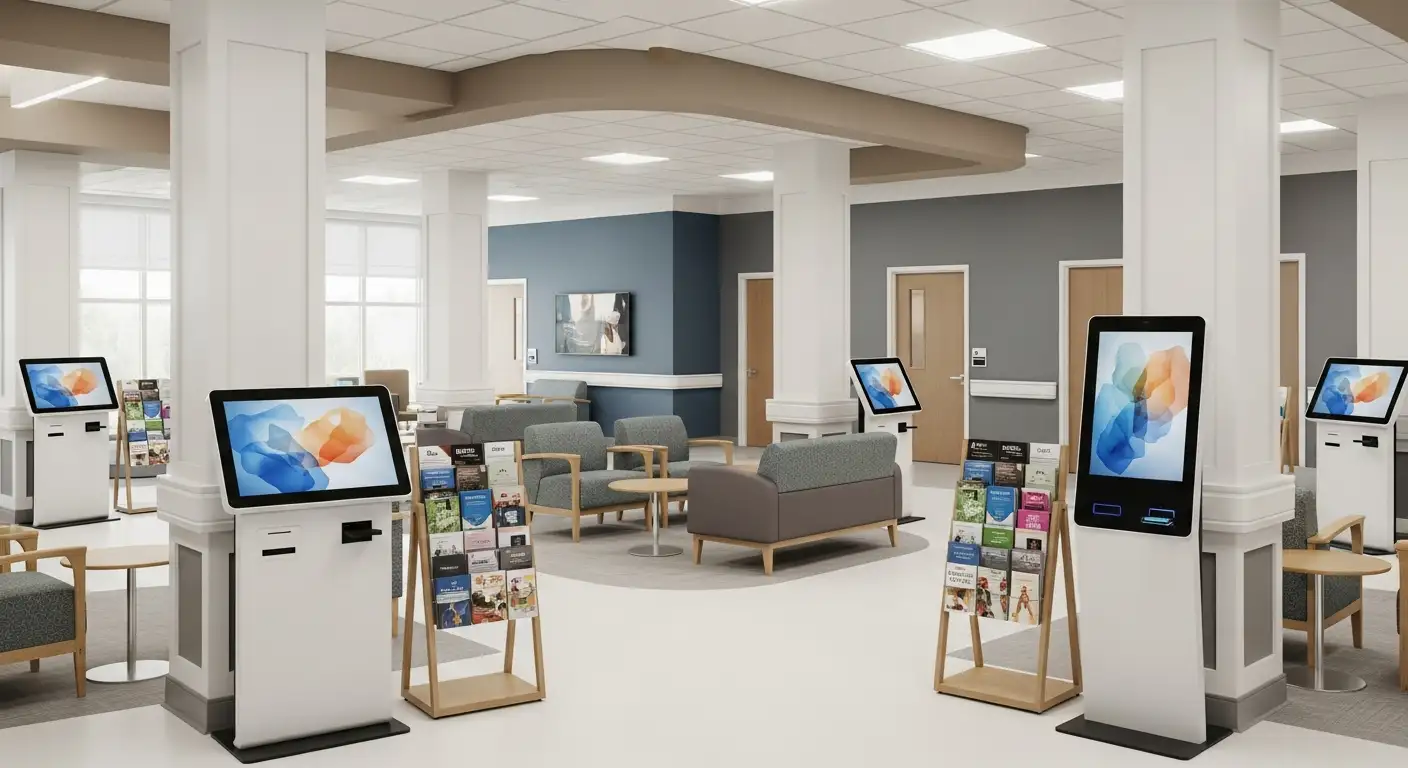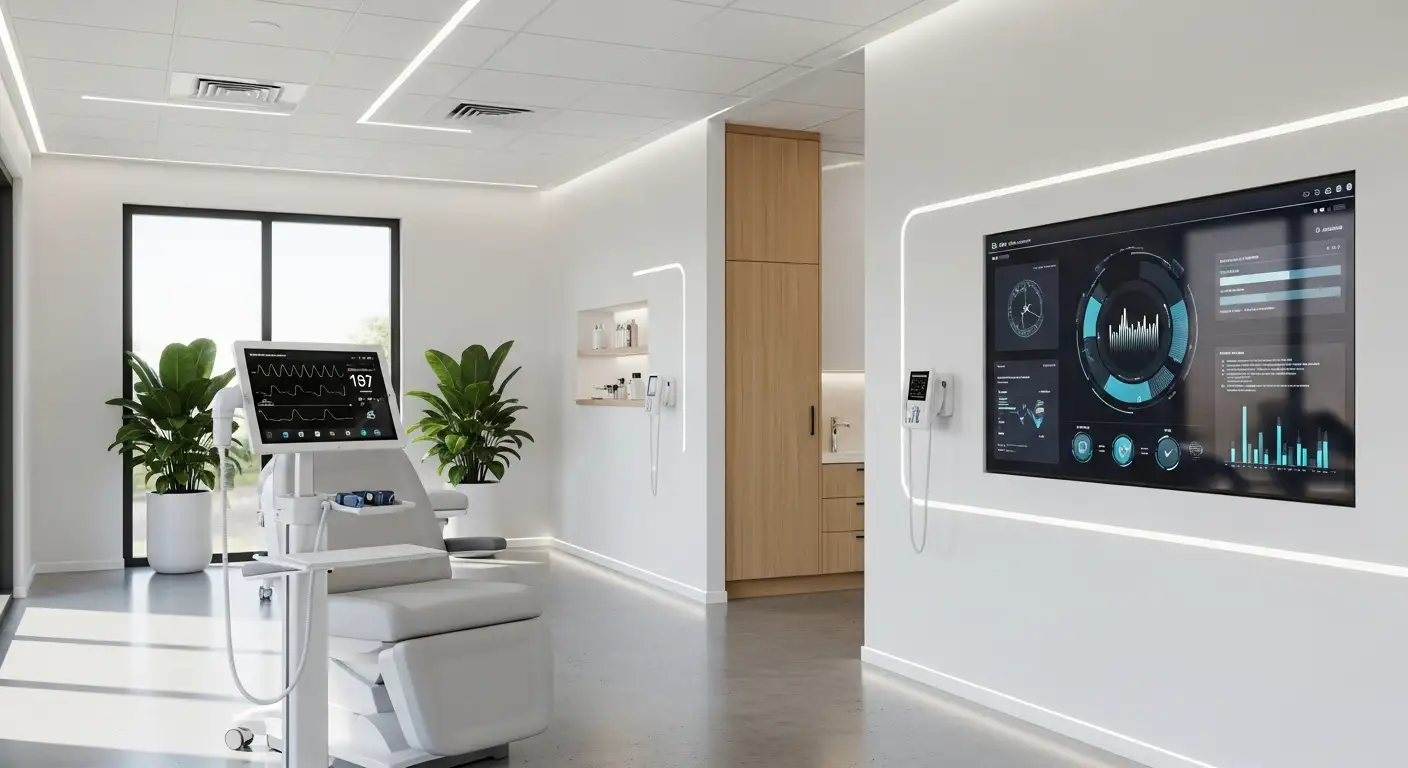Telehealth-Only Plans vs Hybrid Visit Models

Understanding the Evolving Landscape of Healthcare Delivery
The rapid advancement of telehealth technology accelerated by the COVID-19 pandemic has fundamentally transformed healthcare delivery. As policymakers, providers, and patients adapt to these changes, understanding the differences, benefits, challenges, and future prospects of telehealth-only plans versus hybrid visit models is crucial for designing effective, equitable, and sustainable healthcare systems.
Definitions and Core Characteristics of Telehealth-Only and Hybrid Models
 Telehealth-only models deliver medical care entirely through remote technologies without requiring in-person visits. They utilize tools such as video consultations, remote patient monitoring, secure messaging, and mobile health applications to provide accessible and efficient healthcare services. This approach emphasizes convenience, especially for patients facing barriers like transportation issues or geographic isolation. However, it relies heavily on reliable internet connectivity, user-friendly platforms, and strict adherence to privacy and security standards to maintain quality and safety.
Telehealth-only models deliver medical care entirely through remote technologies without requiring in-person visits. They utilize tools such as video consultations, remote patient monitoring, secure messaging, and mobile health applications to provide accessible and efficient healthcare services. This approach emphasizes convenience, especially for patients facing barriers like transportation issues or geographic isolation. However, it relies heavily on reliable internet connectivity, user-friendly platforms, and strict adherence to privacy and security standards to maintain quality and safety.
In contrast, hybrid healthcare delivery models combine both in-person visits and telehealth services, creating a flexible approach tailored to individual patient needs. These models allow patients to switch seamlessly between virtual and face-to-face encounters, supporting continuity of care, especially for those with chronic illnesses, mobility challenges, or residing in underserved areas. The hybrid approach enhances access by reducing logistical barriers and offering more patient-centered options, fostering better engagement and satisfaction.
Remote care technologies are central to both models. Synchronous tools like live video calls enable real-time interaction, while asynchronous methods such as secure messaging, e-visits, and remote monitoring devices allow for ongoing management outside scheduled appointments. These technological solutions revolutionize how healthcare is delivered, making it more adaptable and inclusive.
Patient engagement and accessibility are pivotal in both models. Effective virtual care depends on intuitive technology, digital literacy, and addressing disparities related to the digital divide. Strategies like involving clinicians in selecting appropriate virtual tools and developing clear triage protocols help maximize benefits. Notably, hybrid models may also bridge existing disparities by connecting underserved populations with continuous, high-quality care, integrating digital tools with necessary in-person support.
| Aspect | Telehealth-Only Model | Hybrid Model | Explanation |
|---|---|---|---|
| Delivery Mode | Fully remote | Combines in-person and virtual | Focuses exclusively on remote services vs. blending both approaches |
| Technology Use | Video, remote monitoring, messaging | Video, remote monitoring, in-person visits | Both rely on remote tools, but hybrid incorporates physical visits |
| Patient Flexibility | Limited | High | Patients can choose or switch modalities based on need |
| Benefits | Accessibility, convenience, reduced travel | Continuity of care, tailored interventions, improved engagement | Hybrid enhances care personalization and connection |
| Challenges | Digital literacy, connectivity, security | Infrastructure, coordination, disparities | Both face barriers, requiring strategic management |
Understanding these models helps healthcare providers optimize service delivery, ensuring high-quality, accessible, and patient-centered care tailored to diverse populations.
Main Types and Modes of Telehealth Delivery

What are the main models of telehealth delivery?
The three primary telehealth delivery models are home-based, community-based, and telephone-based services, which facilitate remote patient monitoring and care.
Home-based telehealth involves patients receiving care directly at their residence, utilizing tools like remote monitoring devices, video consultations, and digital health apps. These methods allow continuous health tracking, medication management, and virtual check-ins, especially beneficial for older adults managing chronic conditions.
Community-based telehealth operates within local clinics or community centers, where patients can access digital health tools with assistance from healthcare staff. This model bridges connectivity gaps, enabling those with limited internet access or tech familiarity to receive virtual consultations and support.
Telephone consultations remain a vital component, especially for patients without reliable internet or devices capable of video communication. They offer immediate access to healthcare providers, supporting follow-up care, triage, and medication advice.
These models, often combined, support flexible, accessible healthcare delivery—crucial for older adults, rural residents, and underserved populations. They help mitigate barriers such as transportation issues, social isolation, and limited local healthcare resources.
Integration of Telehealth into Hybrid Care Approaches

Can telehealth methods be used in a hybrid approach with in-person treatment?
Yes, telehealth techniques can be seamlessly integrated with in-person healthcare services to form a hybrid care model. This approach offers increased flexibility for older adults and other patient populations, making healthcare more accessible and tailored to individual needs.
In a hybrid system, virtual visits—such as video consultations, secure messaging, or remote monitoring—operate alongside traditional face-to-face appointments. This combination allows providers to determine the most appropriate care modality based on clinical judgment and patient preferences. For example, routine follow-ups or medication management might be efficiently handled via telehealth, while complex diagnostics still require in-person visits.
Implementing a successful hybrid framework involves strategic clinical workflow planning. Healthcare teams must coordinate scheduling so that virtual and in-person visits complement each other without disrupting continuity of care. Electronic health records (EHRs) should be integrated into workflows to ensure proper documentation across modalities.
Technology plays a vital role in supporting hybrid models. Reliable, user-friendly telehealth platforms must be secure and compliant with privacy standards like HIPAA to protect patient data. Moreover, clinicians and staff need proper training in telehealth delivery, including troubleshooting technical issues and maintaining effective communication remotely.
Care coordination is paramount in hybrid care, especially when managing chronic illnesses or vulnerable populations such as older adults. Clear protocols for triaging which visits should be virtual versus in-person, along with ongoing evaluation of patient engagement and health outcomes, are essential.
To sum up, integrating telehealth into hybrid care models is highly feasible and beneficial. When thoughtfully designed, such systems enhance healthcare accessibility, optimize provider efficiency, and improve overall patient satisfaction by combining the strengths of both virtual and traditional care delivery methods.
Benefits and Clinical Advantages of Telehealth-Only and Hybrid Systems

What are the benefits and advantages of telehealth-only and hybrid healthcare models?
Telehealth-only and hybrid healthcare systems have become vital tools in modern healthcare, especially for older adults and underserved populations. These models primarily enhance patient access by reducing geographical barriers, making it easier for individuals in rural or urban underserved areas to receive medical care.
One of the significant benefits is improved convenience. Patients can schedule visits flexibly, often opting for virtual consultations, which save travel time and expenses. This flexibility is especially beneficial for managing chronic diseases such as diabetes, hypertension, and mental health conditions, where consistent monitoring and timely interventions are essential.
Clinically, these models facilitate better disease management through frequent remote check-ins, medication management, and health monitoring. For example, remote patient monitoring and virtual follow-ups enable providers to detect and respond to health issues promptly, often resulting in improved health outcomes.
Cost reduction is another key advantage. Virtual care decreases hospital readmissions, reduces transportation costs, and minimizes the need for physical infrastructure. This efficiency not only benefits patients but also allows healthcare systems to allocate resources more effectively.
Patient engagement and satisfaction tend to improve with hybrid models that combine in-person and virtual visits. Patients often appreciate the ease of access, the ability to choose communication methods, and the continuous relationship with their healthcare providers. Studies report high levels of patient satisfaction and confidence in virtual care, with many expressing a preference for hybrid models that blend the best of both worlds.
From a clinical perspective, the integration of virtual and in-person care supports comprehensive, coordinated treatment plans. It allows providers to perform initial screenings virtually, decide when in-person examinations are necessary, and manage ongoing care efficiently. Such seamless care pathways can lead to better adherence to treatment plans, fewer missed appointments, and ultimately, improved clinical outcomes.
Despite these advantages, successful implementation depends on addressing challenges like ensuring reliable internet access, improving digital literacy, and investing in secure and user-friendly technology. When these barriers are managed, telehealth-only and hybrid systems promise to deliver equitable, effective, and patient-centered healthcare, transforming how care is delivered and experienced.
Implementation Challenges and Strategic Considerations

What are the challenges and considerations involved in implementing telehealth-only and hybrid care approaches?
Adopting telehealth-only and hybrid care models offers numerous benefits, but it also involves several hurdles that healthcare providers and organizations must thoughtfully address.
Technological barriers are among the most significant challenges. Many patients, especially in rural or underserved areas, lack reliable high-speed internet or the necessary digital devices. For example, studies show that in 2019, about 27% of US adults aged 65 and over did not use the internet, which directly impacts their ability to participate in virtual care.
System usability and digital literacy also pose obstacles. Both older adults and less tech-savvy populations may find virtual platforms difficult to navigate. Ensuring platforms are user-friendly and providing educational resources can help promote confidence and engagement.
Regulatory and reimbursement issues are complex. Different states have varying laws governing licensure, privacy, and data security. Several states, such as New Jersey, New Mexico, and Arkansas, regulate telehealth services to promote continuity of care while restricting telehealth-only plans. Additionally, reimbursement policies, particularly at the federal level, are constantly evolving. Facilitating fair and consistent compensation is essential to sustain these models.
Workflow adjustments require significant planning. Healthcare organizations need to integrate virtual care into existing clinical processes, which involves staff training, scheduling adaptations, and establishing protocols for triage and patient monitoring. For example, digital tools like remote monitoring devices and virtual triage systems demand new workflows for providers.
Addressing the digital divide is critical to ensure health equity. Without measures to improve access, vulnerable populations risk being excluded from these innovations. Strategies include establishing community tech support, developing low-bandwidth solutions, and deploying community-based programs with local clinics.
Finally, provider and patient training are essential. Educating clinicians on best practices for virtual care, data security, and patient privacy builds confidence and quality. Patients need clear instructions and support to effectively engage with digital tools, ensuring that telehealth and hybrid models truly enhance healthcare delivery and outcomes.
Impact on Healthcare Accessibility, Disparities, and Patient Outcomes
How do telehealth-only and hybrid models impact healthcare accessibility and patient outcomes?
Telehealth-only and hybrid care models have revolutionized access to healthcare by bridging gaps for traditionally underserved populations. In rural communities, where healthcare resources are scarce and travel can be burdensome, hybrid models combining local clinics with remote specialist consultations provide timely and continuous care. Data from various models, including those implemented in rural Texas or by organizations like Troy Medical, show significant improvements in patient engagement, satisfaction, and health metrics.
In urban settings, especially among minority groups like Black and Hispanic older adults, these models help mitigate disparities. The study detailed that Black and Hispanic seniors were less likely to engage solely via telemedicine, highlighting barriers like limited internet access or digital literacy. However, hybrid approaches—integrating in-person visits with virtual care—were shown to reduce these gaps, providing equitable access to necessary healthcare services.
Patients with chronic health issues, such as diabetes or heart disease, benefit immensely from hybrid care. Continuous monitoring through remote tools and virtual check-ins lead to better disease management, improved clinical outcomes, and enhanced medication adherence. For example, in cardiovascular care, outpatient hybrid models have allowed for earlier interventions, lowering hospital readmissions and improving patient quality of life.
Patient satisfaction also significantly improves with hybrid care. Many patients find virtual visits convenient and comparable in quality to in-person care. Studies demonstrate that up to 70% of telehealth users believe virtual care enhances their health management, with many preferring a combination of in-person and virtual visits for balanced convenience and thoroughness.
Furthermore, during public health crises like COVID-19, these models proved essential in maintaining consistent care. Telehealth prevented care disruptions, minimized exposure risks, and ensured continuity, especially for mental health and behavioral health services, which have shown increased utilization and importance.
In sum, incorporating telehealth and hybrid care strategies enhances overall healthcare delivery by expanding access, reducing disparities among racial, ethnic, and rural populations, and fostering better health outcomes and patient experiences across the board.
Factors Influencing Adoption and Future Trends in Healthcare Models
What factors influence the adoption and effectiveness of telehealth and hybrid healthcare models?
The widespread implementation of telehealth and hybrid healthcare models relies on several interconnected elements. Among these, technological infrastructure is foundational. Reliable high-speed internet, intuitive digital platforms, and user-friendly interfaces are necessary to ensure that both providers and patients can effectively engage with virtual care.
In particular, for underserved or vulnerable populations, digital literacy becomes a critical factor. Patients need to be comfortable navigating digital tools, which requires education and support, especially for older adults who might face barriers in using new technologies.
Policy and reimbursement reforms significantly shape the sustainability of these models. Governments and insurers are increasingly extending telehealth reimbursement parity, supporting virtual visits as part of standard care. Such policies encourage providers to adopt hybrid approaches by providing financial incentives and clear regulatory pathways.
Provider and patient acceptance further influence success. Healthcare professionals need training, trust in technology, and confidence that virtual care can deliver quality outcomes. Patients, on the other hand, value the convenience but may remain cautious about care quality, especially if they lack digital skills.
Societal factors also matter; public awareness campaigns and organizational readiness impact acceptance levels. Addressing privacy and security concerns, along with investing in digital infrastructure, helps alleviate hesitations. In the future, continuous technological innovations, such as remote monitoring devices and AI-assisted diagnostics, are expected to further enhance the effectiveness of hybrid healthcare.
In summary, successful adoption depends on robust technological solutions, supportive policies, provider readiness, patient education, and ongoing innovation. Together, these elements will shape the evolution of healthcare models, emphasizing accessible, efficient, and high-quality care delivery.
The Future Outlook: Innovation and Sustainability of Telehealth and Hybrid Services
What is the future outlook of telehealth and hybrid healthcare models?
The trajectory of telehealth and hybrid healthcare systems appears highly optimistic, with their evolution marked by rapid technological advancements and broader acceptance among patients and providers. These models are increasingly transforming into comprehensive, integrated care networks where in-person and virtual services work together seamlessly. This integration allows for better management of chronic illnesses, more effective preventive care, and access to underserved populations, significantly improving health outcomes.
Emerging technologies like artificial intelligence (AI) and remote monitoring devices are playing pivotal roles in enhancing these models. AI algorithms improve diagnostic accuracy, assist in personalized treatment planning, and automate routine tasks, freeing clinicians to focus on complex care. Remote patient monitoring tools enable continuous tracking of vital signs and health metrics outside clinical settings, providing real-time data that informs timely interventions.
Policy reforms are also supporting this shift, with governments and payers extending telehealth reimbursement policies and establishing standards for virtual care. These changes help address previous hurdles such as payment parity and regulatory compliance, fostering a more sustainable environment for telehealth growth.
Furthermore, the development of integrated care systems ensures that information flows smoothly across various healthcare providers and settings, making care more cohesive and patient-centered. This approach promotes better coordination, reduces redundancies, and minimizes gaps in treatment.
Despite these advancements, challenges like technology integration, cybersecurity concerns, and adapting clinical workflows remain. However, ongoing investments and strategic initiatives are actively tackling these issues, paving the way for more resilient and scalable hybrid healthcare models.
Ultimately, telehealth and hybrid care are set to become fundamental elements of future healthcare delivery around the globe. They promise more accessible, personalized, and cost-effective services, contributing to a revolution in how healthcare is experienced and managed worldwide.
Charting a Path Toward Equitable and Innovative Healthcare
The ongoing transformation in healthcare delivery reflects a strategic move toward flexible, patient-centered models that effectively combine the strengths of telehealth and in-person care. Hybrid models, with their capacity to address disparities, incorporate technological innovations, and adapt to evolving policies, will likely form the backbone of future healthcare systems. Emphasizing equitable access, provider training, cybersecurity, and integrated workflows will be critical for realizing the full potential of these models. As the healthcare landscape continues to evolve, embracing these innovations will be essential to ensure quality, efficiency, and inclusivity in patient care, ultimately shaping a more resilient and accessible health system for all.
References
- Comparing In-Person Only, Telemedicine Only, and Hybrid Health ...
- COMPARING IN-PERSON ONLY, TELEMEDICINE ONLY, AND ...
- Bricks and Clicks: Telehealth and Hybrid Models of Care
- [PDF] Hybrid Virtual Care Models for Optimal Patient Experience
- Telehealth 2.0: Hybrid Models and Continuity of Care Policies - pavmt
- Preference for In-Person, Telehealth, or Hybrid Healthcare?
- Getting started | Telehealth.HHS.gov
Recent articles
Want to Feel Better and Live Healthier?
Join hundreds of patients taking control of their health with personalized care that fits their life – not the other way around.
Rated 4.8/5 by 32+ customers







